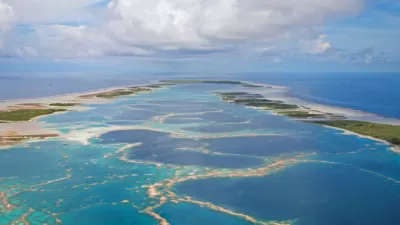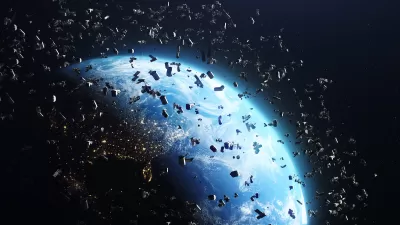For those who thought that glacial melting due to climate change mainly affected Greenland and mountain glaciers like in the Himalayas, think again. A new NASA/UC Irvine study reports that melting of West Antarctica's glaciers "appears unstoppable".
"Large portions of the massive ice sheet in West Antarctica are melting — and there's likely nothing we can do to stop the decline," writes Brad Plumer for Vox, Ezra Klein's new media venture, about a new study by researchers at NASA and the University of California, Irvine.
The key question is how quickly all that ice will melt into the ocean and push up sea levels in the decades and centuries ahead.
For readers concerned about sea-level rise, the study makes some important changes to what had been predicted because the glaciers "appear to be dwindling even faster than scientists thought." It "means forecasts for future sea-level rise may have to be revised upward. (The current consensus holds that global average sea levels will rise between 1 foot and 4 feet by 2100,) adds Plumer.
Note that "ice sheet" and "glaciers" are used interchangeably by both Plumer and NASA.
According to the UC Irvine press release, the study incorporated "40 years of observations – that six massive glaciers in the Amundsen Sea sector 'have passed the point of no return,' according to glaciologist Eric Rignot, a UC Irvine Earth system science professor who is also with NASA’s Jet Propulsion Laboratory."
One final note on why the ice sheets are melting. "It's not because the air in Antarctica has been heating up. Instead, strong winds are pulling warmer water from the deep oceans toward the glaciers and melting the ice sheet from below," writes Plumer. "Natural fluctuations and the ozone hole over Antarctica may also be playing a role."
FULL STORY: Vox: Eventual collapse of West Antarctica's glaciers "appears unstoppable"

Alabama: Trump Terminates Settlements for Black Communities Harmed By Raw Sewage
Trump deemed the landmark civil rights agreement “illegal DEI and environmental justice policy.”

Planetizen Federal Action Tracker
A weekly monitor of how Trump’s orders and actions are impacting planners and planning in America.

Why Should We Subsidize Public Transportation?
Many public transit agencies face financial stress due to rising costs, declining fare revenue, and declining subsidies. Transit advocates must provide a strong business case for increasing public transit funding.

Understanding Road Diets
An explainer from Momentum highlights the advantages of reducing vehicle lanes in favor of more bike, transit, and pedestrian infrastructure.

New California Law Regulates Warehouse Pollution
A new law tightens building and emissions regulations for large distribution warehouses to mitigate air pollution and traffic in surrounding communities.

Phoenix Announces Opening Date for Light Rail Extension
The South Central extension will connect South Phoenix to downtown and other major hubs starting on June 7.
Urban Design for Planners 1: Software Tools
This six-course series explores essential urban design concepts using open source software and equips planners with the tools they need to participate fully in the urban design process.
Planning for Universal Design
Learn the tools for implementing Universal Design in planning regulations.
Caltrans
Smith Gee Studio
Institute for Housing and Urban Development Studies (IHS)
City of Grandview
Harvard GSD Executive Education
Toledo-Lucas County Plan Commissions
Salt Lake City
NYU Wagner Graduate School of Public Service




























